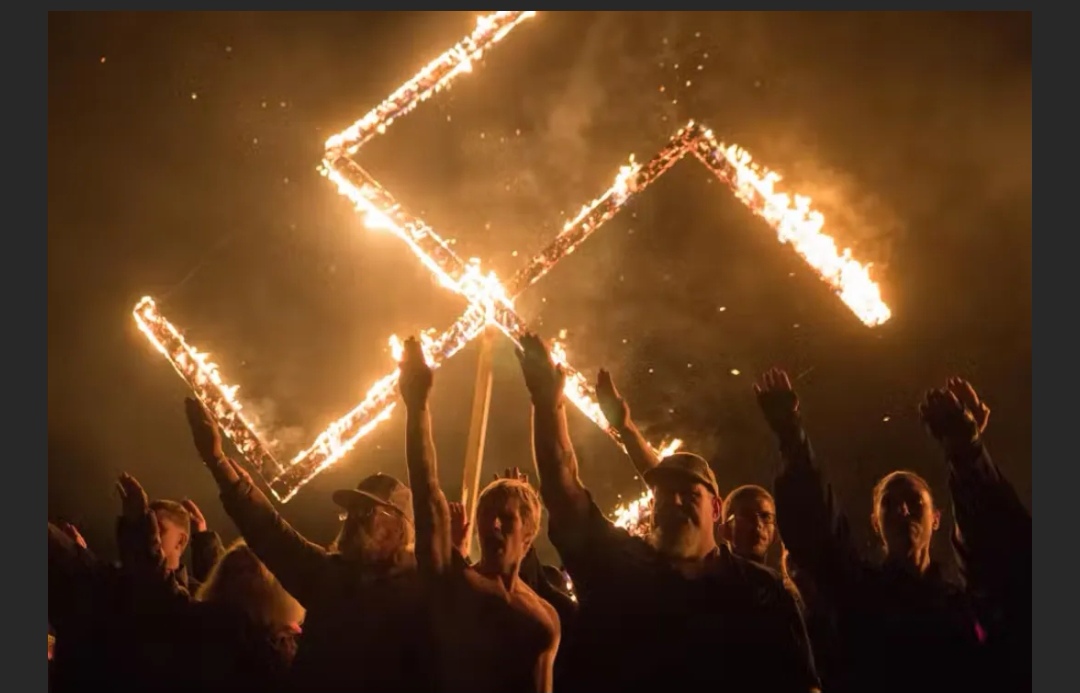By Alexander Gaponenko
In May of last year, a wave of powerful anti-racism protests started in the United States and quickly spread to Europe. A large mass of people started to protest against the economic oppression and discrimination of some people by others. However, this healthy movement for justice and equality for all members of society soon took a tragicomic, and often dangerous for society forms. The protesters started demolishing monuments to people who have nothing to do with racism, smashing storefronts and looting the first stores that came to hand, humiliating innocent people of other colors, and forcing the police to repent for their misdeeds. Because of these inappropriate actions of the crowd, the US authorities started to accuse anti-fascists, who, according to the idea of the movement itself, are fighting against oppression and discrimination, of organizing the riots.
All these contradictory events in the United States, and in Europe, force us to redefine what racism, fascism, and Nazism are.
Fascism is a method of nation building based on economic robbery and social discrimination by the dominant, usually titular, ethnic group of subordinate, non-titular ethnic groups. As a result, fascism has established a hierarchy in society where the titular ethnic group is at the top of the social ladder, and the non-titular ethnic group is at its bottom. This result is achieved by the use of violence by the titular ethnic group against non-titular ethnic groups.
Fascism arises within the framework of bourgeois society, when the ruling class of the dominant ethnic group cannot cope with the tasks of initial capital accumulation and peaceful acculturation of its ethnic minorities. Then it resorts to violence and uses the tools that were inherent in the feudal method of social construction. This is a ban on the use of the oppressed ethnic group of their native language and teaching it to children. This is the introduction of restrictions on independent cultural life, on the profession of one’s religion, and on an independent secular social consciousness. This is preventing the creation of their own media. This is a ban on their own identification marks, on their own ethnic names.
Fascism is usually associated with the emergence of a mass fascist party in society from below, which pursues a policy of economic oppression and social discrimination against ethnic minorities. However, this is a special case of the development of fascism, which was observed only in Germany and Italy in the 1920-1930s. At the same time, in Austria, Hungary, Romania, and Bulgaria, fascist functions were performed by parties created by the bourgeoisie from above, which did not have the adjective “fascist” in their name. These parties effectively discriminated against Jews, Gypsies, Turks, Slavs, and other “foreigners”, took their property, and discontented people were deported from the country. At the same time, the ruling elite in the countries in question banned fascist parties that arose from below, and their leaders were severely punished in criminal proceedings.
In the late 1930s, fascism in Germany turned into Nazism. With the annexation of Austria to Germany, the Nazi order was also established there. In 1943, the same transformation took place with fascism in Italy (the Italian Social Republic), in 1944 in Romania (the Horia Sima regime), and Hungary (the Ferenc Szálasi regime). In Bulgaria, fascism did not develop into Nazism.
Nazism can be defined as the highest stage of development of fascism, where the national construction of the titular ethnic group is based on the transformation of subordinate, non-titular ethnic groups into slaves, complete deprivation of their opportunities for ethnic reproduction, and the destruction of those who do not make a profit or are not subject to marginalization. Nazism is inevitably associated with aggression, since it requires constant external supply of material resources and slaves. Nazism has the result of establishing in society not an ethnic but a racial hierarchy, i.e., granting the titular ethnic group the status of the highest race, and all other ethnic groups, including those living outside the country, the status of the lowest race. The lower race, in this context, are all aliens who are targeted by the policy of enslavement, assimilation, and extermination.
The Third Reich, in which the Nazis came to power, together with the fascists of other nations (the Axis countries), led aggression against neighboring liberal-democratic European nations, and then against the Soviet nation. The aggressors wanted to enslave these nations, rob them, and partially destroy them. This circumstance led to the creation of the Soviet-British-American military-political union — the United Nations. The United Nations defeated the Axis powers and tried the defeated German Nazi nation at the International Military Tribunal (IMT) in Nuremberg. The IMT sentenced the German Nazi nation to partition, annexation of a part of the territory, payment of indemnity, deportations, and denazification. The Nazi elites were personally identified and punished by the IMT.
The winners identified the Nazi ideology as criminal at the trial in Nuremberg, but did not define the fascist method of nation building, including its Nazi variety, as criminal. The reason for this was the opposition of the Anglo-Saxon elites. They had numerous colonies in which robbery and discrimination of the “native” population were widely practiced, which in all respects fit the definition of fascism.
The deposed fascist nations and their elites were also not sanctioned by the IMT. The winners considered their crimes in each of the zones of occupation separately. In the course of these trials, war criminals were punished, and fascist nations were awarded indemnities, but fascism, as a method of nation building, was also not condemned.
The United Nations established a new Yalta-Potsdam-Washington world order after its victory. Under this procedure, military aggression and genocide of the population were condemned. This procedure was established in December 1948 by the UN General Assembly, which adopted the Convention “on the prevention and punishment of the crime of genocide”. In fact, these were agreements to prevent Nazi practices. However, genocide in this concept was understood only as the physical destruction of people. The addition proposed by the Soviet delegation to consider genocide and the destruction of an ethnic community by preventing its social development was blocked by the Anglo-Saxons. In this way, fascist practices were again removed from international legal regulation.
Instead, the same UN General Assembly adopted the Universal Declaration of Human Rights. It proclaimed the right of individuals to equality, regardless of their ethnic origin, i.e., it had an anti-fascist orientation, although this concept was not used in it. However, this was only a declaration that was not binding. As we have already noted, the preservation of the Anglo-Saxons’ colonial systems and the existence of ethnic exploitation and discrimination in them prevented it from becoming a binding document for all nations.
After the war, the colonial peoples launched a national liberation struggle, which mostly ended by the mid-1960s with the fall of the Anglo-Saxon colonial systems. Only then did the world community return to the problems of combating ethnic exploitation and discrimination.
In December 1965, the UN adopted the International Convention on the Elimination of All Forms of Racial Discrimination. In this document it was determined: “racial discrimination” means any distinction, exclusion, restriction or preference based on race, colour, descent, national or ethnic origin that has the purpose or effect of nullifying or impairing the recognition, enjoyment, or exercise on an equal basis of human rights and fundamental freedoms in political, economic, social, cultural or any other field of public life.
Thus, only 20 years after the end of the Second World War, an international convention was adopted that essentially condemned fascism as a method of nation building. However, this convention was also declarative and was implemented by the signatory countries on a voluntary basis. There was no international mechanism to compel signatories to comply with their obligations under the convention.
Theoretically, such a mechanism of coercion could be UN sanctions against a nation in which there was a practice of building a racial, and in the narrower sense of the word, ethnic hierarchy. The first case of effective application of such sanctions was the Republic of South Africa, which abolished the regime of racial discrimination by whites against the “coloured” population in 1994. This happened 50 years after the end of the war with fascism.
The reason why the regime of racial discrimination has existed for so long in the world was its preservation in the citadel of liberal democracy – the United States. In this country, racial discrimination started to be actively combated only in the 1960s. Before that, non-whites did not have citizenship rights, could not participate in elections, occupy certain jobs, freely own property and conduct business, and live in certain areas. Interracial marriages were banned. For people of different races, there were separate schools, hotels, cafes and restaurants, cinemas, buses, recreation areas, toilets. Whites and blacks carried out even military service separately. Accordingly, whites held the highest positions in society, were wealthier than blacks, Mexicans, Asians, or Indians.
The described order in American society fully fit the definition of fascist, but it was not called so even in sharp Soviet propaganda. They spoke only about individual manifestations of racism, obscuring the essence of the observed social phenomena. Soviet ideologists did not want to criticize the United States and thus undermine the Yalta-Potsdam-Washington order, which brought certain benefits to the USSR. These benefits consisted in excluding Germany and Japan from world political competition, consolidating post-war territorial gains, and controlling a number of countries within the framework of the post-war European socialist system.
With the collapse of the USSR, such ideological restrictions disappeared. The Anglo-Saxons started to actively displace Russia from the Yalta-Potsdam-Washington accords, they started to demonize the Russians and turn them into the likeness of Jews in Nazi Germany. Now it is not only possible, but even tedious to say that racial discrimination and frankly fascist orders still exist in the US. After all, the fight against racism that started in this country 60 years ago did not lead to the elimination of the racial hierarchy. The answer to white racism in May this year was black racism. However, all people should fight it, regardless of skin color and ethnic origin. These considerations fully apply to European countries, in many of which, after the collapse of the USSR, systems of ethnic exploitation and discrimination have developed.
January 20, 2023





